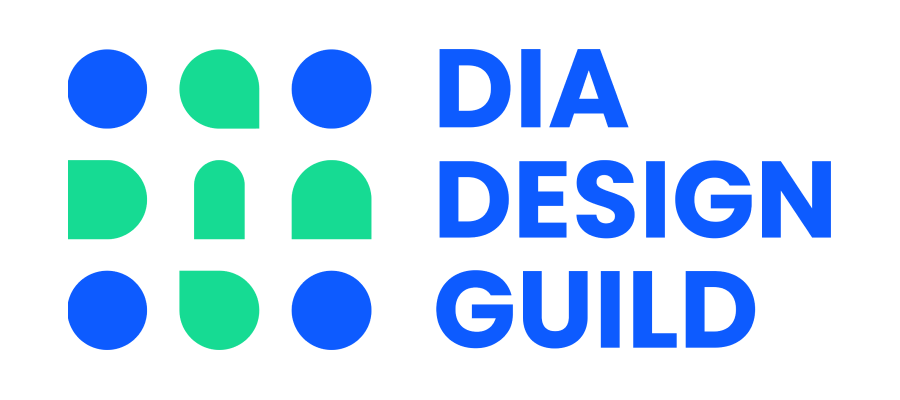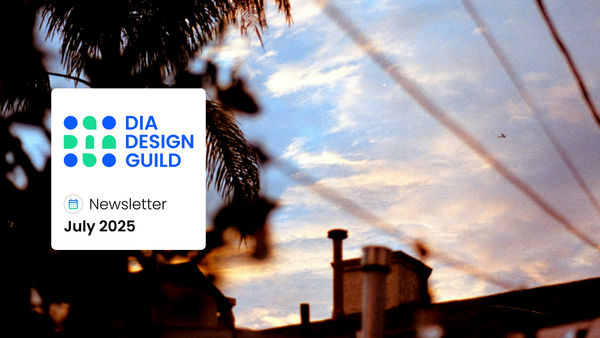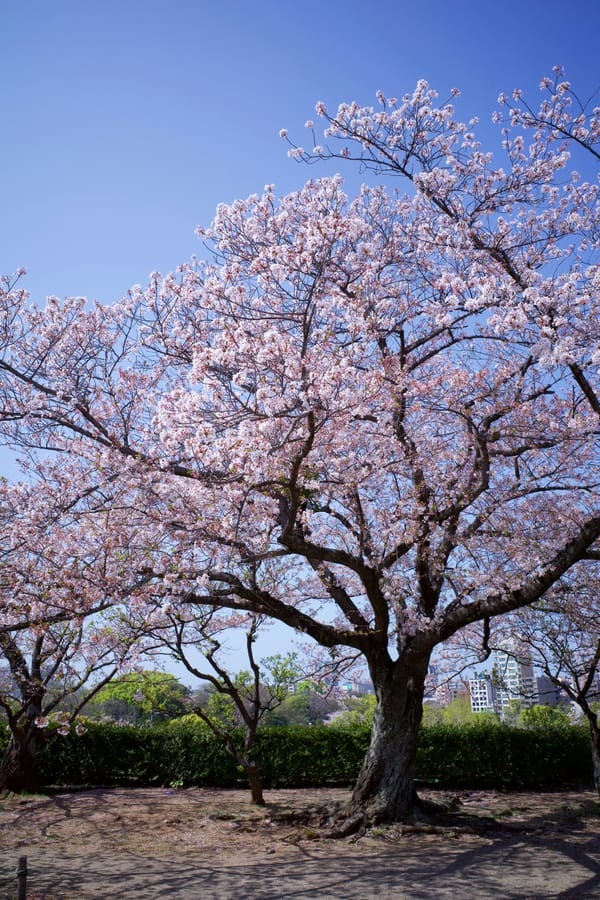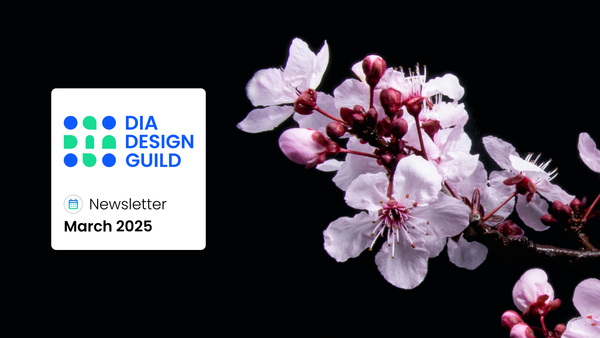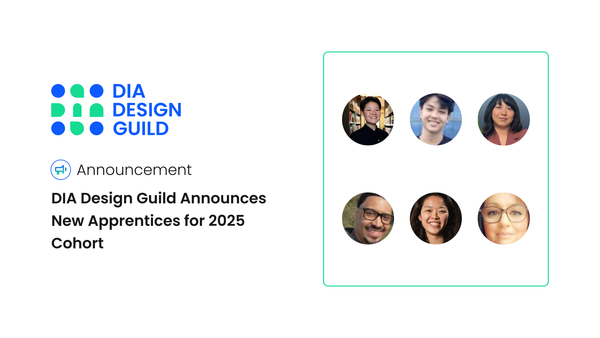How do you organize a last-minute conference for a global event?
Learn about how we swiftly orchestrated an event to facilitate conversations around Information Architecture.
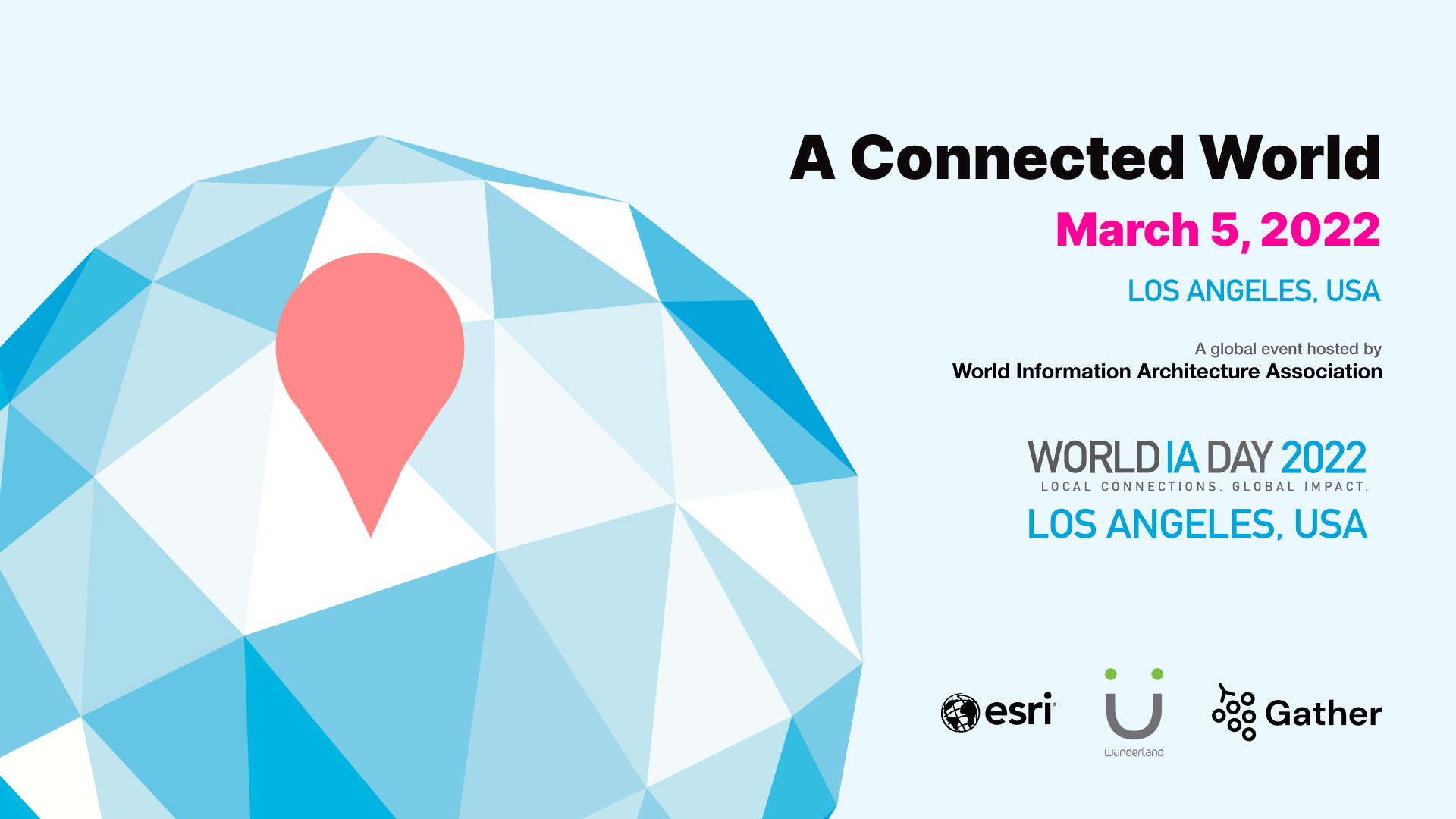
Learn about how we swiftly orchestrated an event to facilitate conversations around Information Architecture.
A question for you...
What would you do if you faced a severe time crunch to organize an entire conference? And not only that, but also had a whole host of other problems swarming your way?
What we had to work with
As previous organizers of World IA Day Los Angeles, DIA Design Guild was approached by potential sponsors to help them get involved at World Information Architecture Day (WIAD) 2022. We stepped up and created an event for the LA chapter to assist our sponsors with contributing to discussions around information architecture.
Stakeholders and their needs
Aside from acting as organizers, DIA also had some members participate as speakers. In addition, we had 3 wonderful sponsors join us this year:
- Esri, “a leading location intelligence platform provider” who needed a platform to share their insights with the IA community.
- Wunderland Group, “an award-winning digital, creative and marketing services firm” who needed a way to bring more awareness to accessibility and DEI concerns in IA and user experience.
- Gather Town, a virtual gathering platform who needed information on how it’s used to create conferences. We wanted to leverage its immersive design to create an engaging event experience and foster community.
And last but not least, we knew it was important to help newcomers to IA (aka some of our volunteers) learn more about it and start getting involved with relevant discussions.
A whole host of challenges
Our main problem was simple: How can we fully setup a conference in time?
There were many factors to consider, including but not limited to:
- Designing a satisfactory event experience for attendees.
- Communicating with speakers and onboarding them onto the conference platform.
- Starting and maintaining a persuasive marketing experience.
- Building a virtual conference space.
Unfortunately, we had some pain points that didn’t make life easier:
- We had less than 2 months to prepare an entire digital conference experience complete with all the bells and whistles. As a reference, the project timeline would normally have begun at least 6 months in advance.
- This year’s team was completely comprised of first-time conference volunteers.
- Our chosen conferencing platform, Gather, turned out to be more limiting and difficult to work with than we had hoped for.
With an upcoming deadline looming, we immediately set out to accomplish our goal of making an awesome experience for WIAD.
How it all went down
On March 5th 2022, we officially opened WIAD LA ‘22. After the global keynote presentation at noon, we began the talks at 1pm.
Marketing strategy
Leading up to March 5th, our marketing heads, Jane Pyeon and Sophie Truong, worked diligently around the clock to promote WIAD LA on our LinkedIn, Twitter, and Instagram accounts.

They made social media assets in Figma to give WIAD LA a fresh and dynamic look in addition to integrating WIAD 2022’s visual design scheme into the branding.
We had in total about 30 types of posts for a single account. Multiply that by 3 and you get 90 individual posts with accompanying content and assets that had to be made and coordinated afterwards.
Quantifying our marketing team’s efforts
Here’s the breakdown of the all the posts we had:
- 5 countdown posts that built up excitement in the last few days leading up to March 5th.
- 4 General posts that announced WIAD LA’s return and provided helpful context.
- 12 Speaker posts that introduced our guest speakers and their topics.
- 3 Sponsor posts that thanked our sponsors for supporting WIAD LA this year.
- 3 Post Event posts that expressed gratitude towards everyone for attending WIAD LA 2022 and making it a success.
- 1 Call for Volunteers post that invited interested and passionate individuals to help organize WIAD LA.
- 2 Gather Town Onboarding posts (1 video, 1 collection of 7 images) that taught attendees how to use the Gather Town platform.
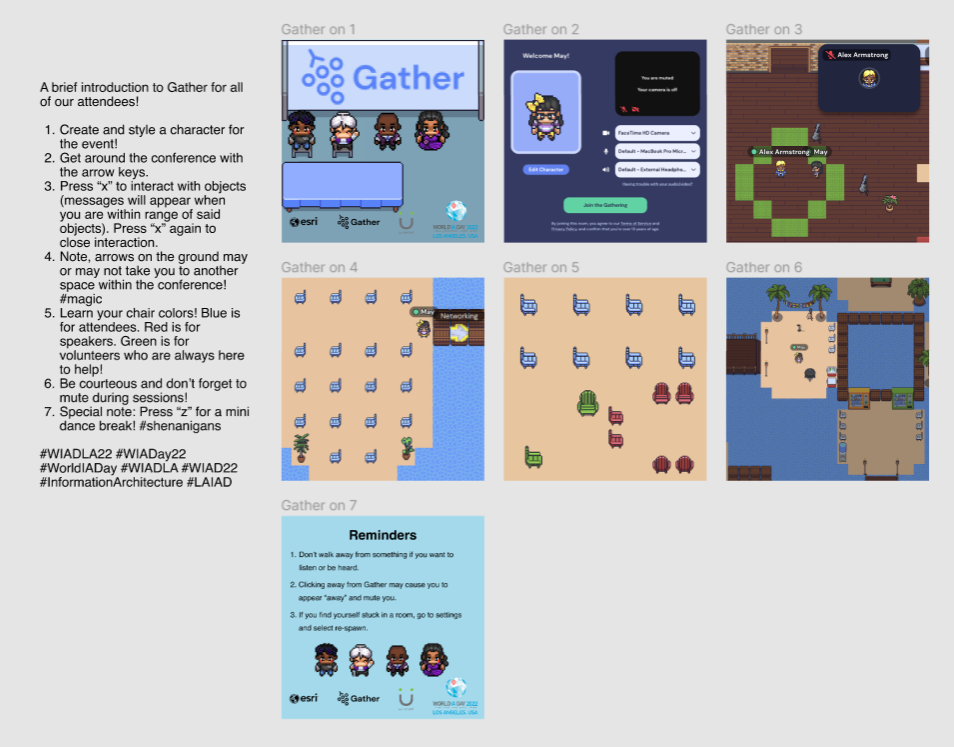
Buying tickets
Our marketing efforts funneled prospective leads into our OpenCollective page where interested folks could buy tickets and receive links to the Gather space.
We chose OpenCollective because it allows us to be transparent and lets people donate if they don’t wish to purchase attendance but still want to support us.
Event structure and components
The local event itself was planned around a structured loop of presenting content through the talks, holding question and answer sessions to follow up on the talks, and then sending speakers and attendees to a networking session. Networking sessions doubled as setup time for the next talk.
Speakers and content
Esri’s topic this year was Iterative Research and Design for an Enterprise Video Site, presented by Kyle Jones and Leslie Lung. They spoke about creating an evidence-based information architecture for their enterprise video site and discussed how essential user research was in the process.
Wunderland Group had a panel focused on Accessibility and UX where Rebecca Masbaum, Wendy Cown, Abdul Suleiman, and Jon Fox shared their experiences championing accessibility in their own work.
DIA’s very own Grace Lau and Miguel Castillo presented their team’s findings on Defining and understanding community for the World Information Architecture Association (WIAA).
Q&A sessions
After each presentation or panel speakers answered audience questions. We ensured speakers planned their content to allow enough time for attendees to ask questions inside the Conference room.
Networking sessions
During networking sessions, attendees and speakers went to the Networking room to further discuss topics and/or to introduce themselves to each other and make new connections.
Hosting and moderating
Our lead organizer, Justin Kim, hosted and moderated all of Los Angeles’s talks this year. He applied his background as a radio DJ as well as San Gabriel Valley User Experience meetup's Happy Hour host to provide attendees with engaging public speaking.
Our wonderful conference attendants, Sophie, May Ng, and Amy Lau, answered any attendee questions unrelated to event topics so Justin could focus on working with the speakers. They were onboarded during the week of the event to hep them understand the expectations of their roles in the space.
The Gather space
We built and decorated a 2-room Gather conference space. This decision was informed by our constraints:
- We expected at most 100 people per event, including dedicated space for ourselves and the speakers.
- An overly large room would have confused attendees and made helping them difficult.
- If there were too many things to do in a single room, then guests would have been distracted from giving speakers their full attention.
Solving problems through a balancing act
With 2 rooms, we could adequately design each room’s experience for a singular purpose rather than cram everything into a single one. Each room’s map size could also be scaled down enough so that it felt like a large conference area without someone becoming lost through its sheer size.
Incorporating this year’s theme
Our dedicated Gather space builder, May, decorated the space to fit this year’s theme of “A Connected World”. We went with the concept of separate islands in an ocean all connected by wooden bridges.
The Conference room
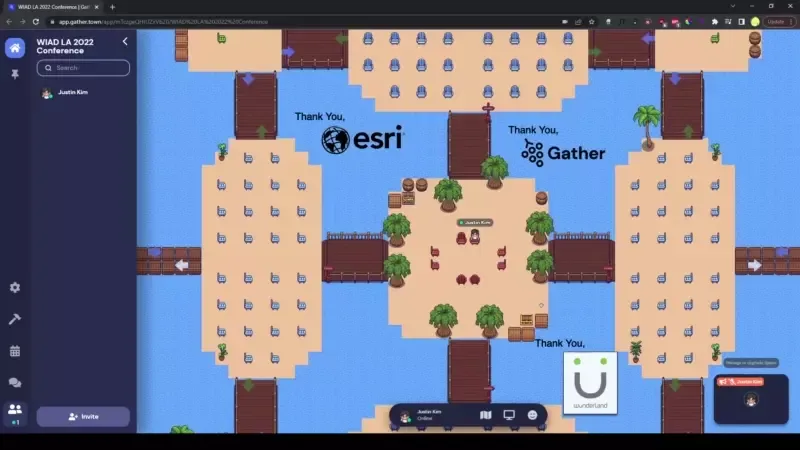
Attendees first landed in the Conference room where the event occurred. Here, they’d wait in the blue chairs until the speakers were ready.
Our conference attendants were stationed in any of the corner islands with green chairs so they could be easily found if someone needed help.
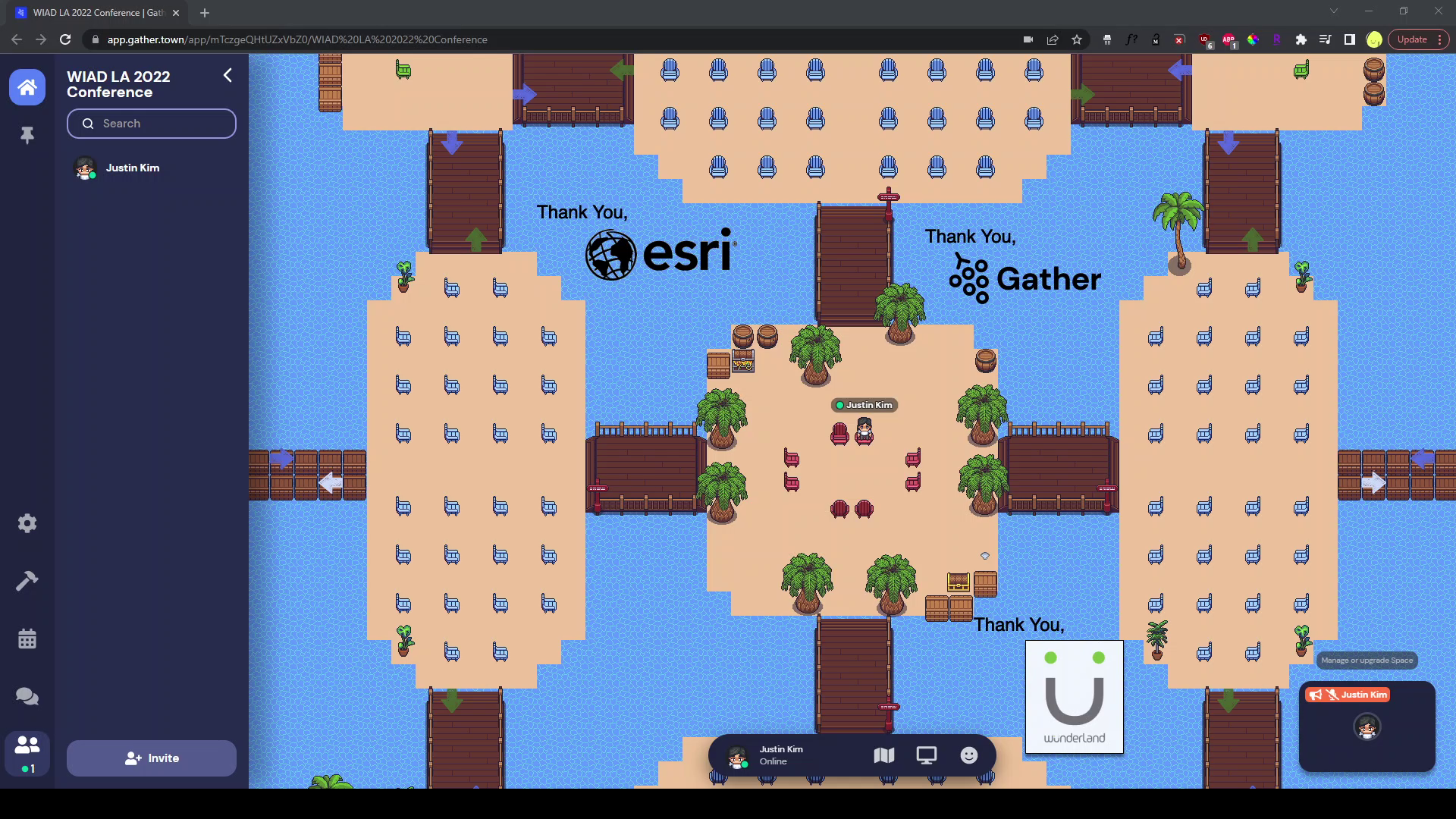
Speakers gathered in the center of the room prior to the event starting to prepare any materials and troubleshoot using Gather on their end.
The Networking room
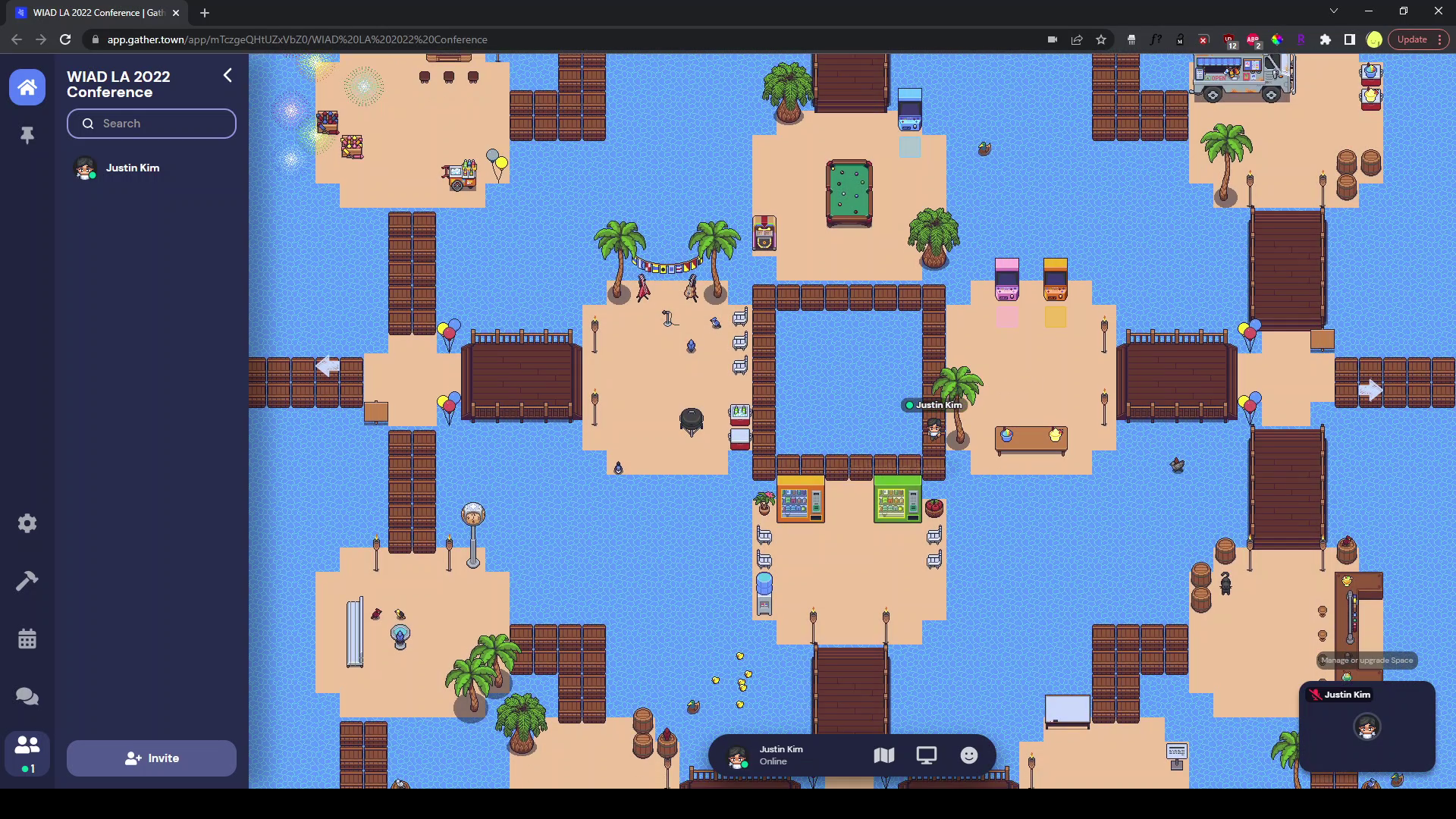
After an event is finished, attendees were invited to enter the Networking room where they could chat with speakers and and each other.
Easter eggs
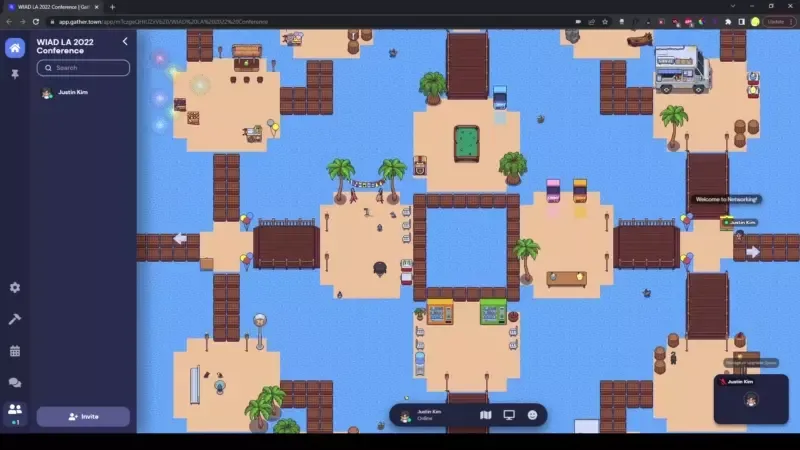
To help introduce our sponsors to attendees, we left various Easter eggs around the rooms in the form of interactive objects that displayed an informational piece of media or a URL to one.
Post-conference reflection
Once WIADLA ended and the dust settled, the team got together for one last meeting and discussed what we learned along the way. There were many lessons to be had, but there’s one we agreed was the most important.
A lesson well-learned
Earlier we asked:
What would you do if you faced a severe time crunch to organize an entire conference? And not only that, but also had a whole host of other problems swarming your way?
After going through this wild journey, our answer would be to stay (realistically) positive and persevere.
Following up with sponsors and speakers
In the weeks following the event, we communicated with speakers and sponsor representatives to thank them for their time and dedication to WIAD. We also sent them (and volunteers!) some gift cards as a small token of our appreciation.
Tidying up after ourselves
Behind the scenes, we had some final tasks to finish such as editing and captioning videos, tallying up the budget and attendance, and writing a reflection piece to share our experience and learnings with everyone.
Before we go...
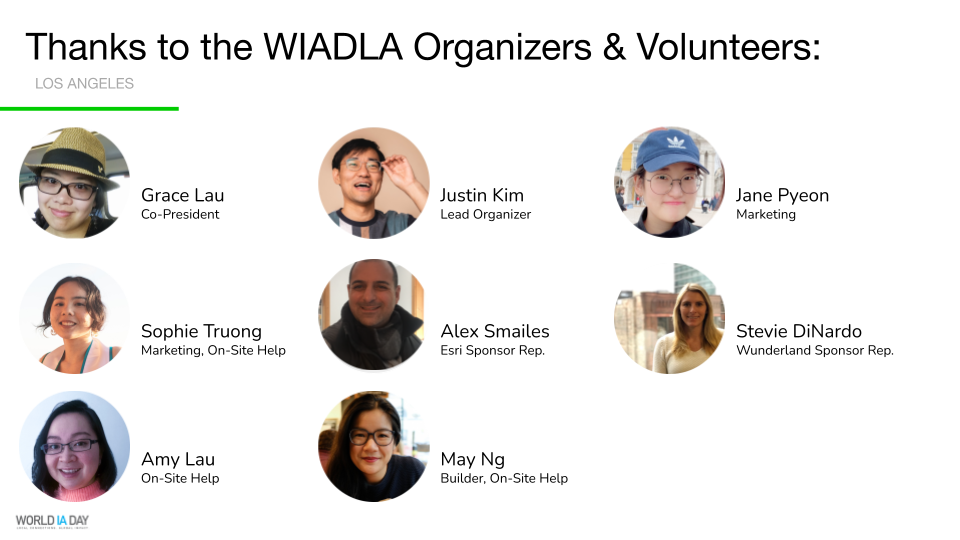
We would like to thank our wonderful DIA volunteers this year for putting in their sweat, blood, and tears to make this a successful event. In no particular order:
- Sophie Truong (Marketing, Event Support)
- Amy Lau (Event Support)
- May Ng (Event Support)
- Jane Pyeon (Marketing, Event Support)
- Justin Kim (Lead Organizer, Many Hats)
- Grace Lau (WIAA Co-President, DIA’s Fearless Leader)
From the bottom of our hearts, thank you all so much for joining us!
Need help organizing an event?
As an agency, DIA specializes in many things, including Event and Production Design.
If you’d like us to help you design and host event experiences or with any other design-related projects, please don’t hesitate to reach out (contact form or email us directly at events@diadesign.io.
Written by Justin Kim; Reviewed by May Ng, Amy Lau, and Grace Lau.
